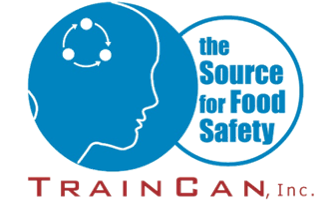Canada overtakes U.S. in food safety and security index
Article Published November 29, 2021
Article Source: Canada overtakes U.S. in food safety and security index - Food Safety News
Canada has pulled ahead of the United States in the latest edition of a report that measures food security.
The Economist Impact’s Global Food Security Index (GFSI) has the United States in ninth while Canada is seventh. In the previous edition, the United States was eleventh with Canada in twelfth.
The GFSI evaluates how well a country is able to meet its population’s calorific and nutritional needs and the impact of external factors such as agricultural infrastructure, political stability and climate risks. It measures the drivers of food security in 113 countries, based on affordability, availability, quality and safety, and natural resources and resilience.
Scores across all nations dropped during the past two years because of the COVID-19 pandemic, conflict and climate variability, according to the report
Food quality and safety key points
Most nations score well on the quality and safety of food. This is key because diet-related diseases are the primary cause of premature death globally, according to the report.
The category looks at whether food is stored safely, how nutritionally diverse diets are, the quality of protein, how many micronutrients are available, and what sort of nutritional standards are in place.
There is a rise in countries able to store food safely. There have been improvements to crop storage and the ability to refrigerate food with more people now having access to power. There is also increased access to basic drinking water services. Having water is essential for food safety, as it is used in everything from washing produce to enabling workers to wash their hands.
However, there was a drop in countries’ self-reported assessments on how well their systems are able to respond to keep food safe, including through existing laws and product recalls.
“We must ensure that well-targeted and efficient food safety-net programs are in place, and focus on lowering inequality in income and across genders,” said Pratima Singh, project lead for the Global Food Security Index at Economist Impact.
“We must invest in future-proofing our food supply by investing in agricultural R&D and technology. And we must prioritize agricultural adaptation, including through national and regional policies, and disaster risk management plans, to develop sustainable food production systems and implement resilient agricultural practices.”
New leader
Ireland took top spot from Finland, who dropped to fourth. Austria is second followed by the United Kingdom, Switzerland and the Netherlands with Japan and France also in the top 10. Sub-Saharan African nations dominate the bottom 10 spots, taking up seven places, with Burundi in last place.
The index shows that hunger and stunting in children are mostly tied to the quality and safety of food. Populations with diets that lack quality protein and micronutrients, and where access to drinking water is limited, score worse in food security.
Tim Glenn, executive vice president and chief commercial officer at Corteva Agriscience, a company that sponsors the index, said the work is an indicator of the trends in food security.
“The GFSI looks beyond hunger to identify the underlying factors affecting food insecurity around the world. Corteva believes farmers have a critical role in helping achieve a more food-secure world,” he said. “To reverse the trends in food insecurity, we believe that all stakeholders must collaborate to bring meaningful, science-based solutions to farmers worldwide.”
